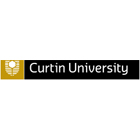Bachelor of Mine and Engineering Surveying
Bachelor of Mine and Engineering Surveying
Mine and engineering surveying is a specialised area within engineering and science. Also known as geomatics engineering or geomatics, the profession has a vital role in resources industry and infrastructure development. Mine surveyors are responsible for the measurement, representation and management of data associated with a mining operation. Their core…
Categories
COURSE DESCRIPTION
Mine and engineering surveying is a specialised area within engineering and science. Also known as geomatics engineering or geomatics, the profession has a vital role in resources industry and infrastructure development.
Mine surveyors are responsible for the measurement, representation and management of data associated with a mining operation. Their core responsibilities include the marking out, measurement and maintenance of direction for mine site surface and underground workings. Mine surveyors are also responsible for (under the Mines Safety and Inspection Act 1994) the preparation and updating of all mine surveying plans for open-pit and underground workings.
Engineering surveyors are integral to the construction industry, ensuring the locations of civil engineering works are correctly positioned and oriented. Engineering surveying typically precedes construction associated with roads, bridges, tunnels, buildings, industrial plants and hydraulic engineering.
In this course you will learn the advanced technology and scientific principles and methods of surveying and how to apply these to industry applications, including land development, construction, mining and mapping.
You’ll develop skills in marking out, measuring and maintaining direction for mine site surface and underground workings, and how to prepare and update mine site surveying plans. In your engineering surveying units, you’ll learn how to ensure civil engineering works are placed in their correct positions and orientations.
You’ll learn to access, evaluate and generate surveying, spatial and related information from multiple sources, and gain the expertise to recognise, analyse and resolve surveying challenges through surveying methods and technologies. These include total station theodolites, satellite positioning (GPS/GNSS), laser scanning, photogrammetry (via drone surveying), geographic information systems (GIS), airborne and marine navigation, digital mapping, satellite and airborne remote sensing, and specialised alignment mine and engineering surveying.
The first two years of the course are based at Curtin Perth, and the third year is based at Curtin Kalgoorlie, where you’ll have opportunities to engage with real industry practices.
How this course will make you industry ready
Graduates meet the education requirements of Western Australia’s Department of Mines, Industry Regulation and Safety for certification as an underground or open pit mine surveyor. This major also prepares you with the appropriate practical experience for operational management at the quarry manager level.
What jobs can the Mine and Engineering Surveying lead to?
Careers
Engineering surveyor
Mining surveyor.
Industries
Construction
Mining and resources
Urban and regional development.
What you’ll learn
Apply surveying principles, concepts and methods to mine and engineering surveying tasks and applications
Think critically and creatively to generate innovative solutions and apply logical and rational processes to analyse surveying problems by recognising and applying technologies to their advantages and limitations when applied to mine and engineering surveying
Access, evaluate and generate surveying, spatial and related information from multiple sources, communicate in ways appropriate to the discipline of mine and engineering surveying
Analyse, describe and engage in Australian and international best practice standards in mine and engineering surveying methods and technologies through self-learning skills
REQUIREMENTS
Students from different countries should have qualifications equivalent to Australian Year 12 and a scaled mark of at least 50 in English, Literature, or English as an Additional Language or Dialect.
IELTS (International English Language Testing System) – Listening, Reading, Writing, and Speaking – 6.0; Overall band score 6.0; TOEFL Score: 79 (overall); Reading 13; Listening 13; Speaking 18; Writing 21; Pearson Test of English – Listening, Reading, Writing, and Speaking – 50; Overall band score 58; TOEFL (Test of English as a Foreign Language) and PBT (Paper Based Test) – 570 and 4.5 in TWE; C1 Advanced Formerly known as Cambridge English: Advanced (CAE) 176 with 169 in Reading, Writing, Listening and Speaking. C2 Proficiency Formerly known as Cambridge English: Proficiency (CPE) 190 with 176 in Reading, Writing, Listening and Speaking.
EDUCATIONAL INSTITUTION
Curtin University is Western Australia’s largest and most culturally diverse university with Australia’s third largest international student population. Around 60,000 students from more than 130 countries study a Curtin degree, at locations including Perth, Margaret River, Kalgoorlie, Sydney, Malaysia and Singapore. Our cultural diversity adds a rich and valuable dimension to the campus atmosphere, preparing all graduates to live and work effectively in an increasingly global environment. We offer a range of industry-aligned undergraduate and postgraduate courses in business, humanities, health, engineering and related sciences. We also have a long-standing focus on Aboriginal and Torres Strait Islander education and culture, supported by our Centre for Aboriginal Studies.Curtin is widely recognised for its practical research that is focused on solving timely, real-world problems. In recent years our research activity has grown significantly, driving our rapid rise up the international university rankings.As a university that never settles, we will continue to develop existing partnerships and establish new ones in areas relevant to our research and teaching.




